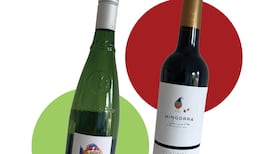Is dark rosé sweeter than pale rosé?
It is a common misconception that darker rosés will be sweeter than very pale pink wines. In fact, the colour of any wine has no bearing on the level of sweetness, although it may mean it has more fruit.
If you think about it for a second, the colour of a red wine does not indicate how sweet the wine will be. It is exactly the same with rosé; if a winemaker uses black grapes with thick dark skins, such as Cabernet Sauvignon and Syrah, the juice and resulting wine will be deeper in colour.
Other varieties, such as Garnacha/Grenache and Pinot Noir, have thin, lightly coloured skins, so wines made from these grape varieties will be paler in colour. Generally, producers will use varieties that are light in colour and full of fruit for rosés. The longer the juice is left soaking with the skins, the deeper the colour and more tannins a rosé will have.
A winemaker can also choose to include some white grapes in the mix, which will certainly make the wine lighter in colour. However, adding white wine to red is forbidden in most countries (pink Champagne being a notable exception). Most rosé is made by macerating the grapes and juice together for any length of time from a few hours to a few days. The juice is then separated and fermented to dryness. Whispering Angel, one of the most famous Provence rosés, is made from grenache, cinsault and rolle, a white grape.
READ MORE
Provence rosé, currently very fashionable, is typically very pale in colour. The classic grapes are grenache, cinsault, both very pale in colour, sometimes with Mourvèdre and/or Syrah. Most are dry with light red summer fruits and sometimes hints of wild herbs. It is almost like a white wine in colour and flavour. It is one of the great poolside wines that also goes well with mixed salads and grilled fish.
Provence now accounts for 10 per cent of total world rosé production, but there are plenty of other options. Spain (Navarra, Rioja), Italy (Piemonte), Portugal and other parts of France (Loire Valley, Bordeaux, Languedoc) all produce very good rosé. In fact, just about every wine-producing country makes rosé. Some of these are deeper in colour but are almost always dry.
















